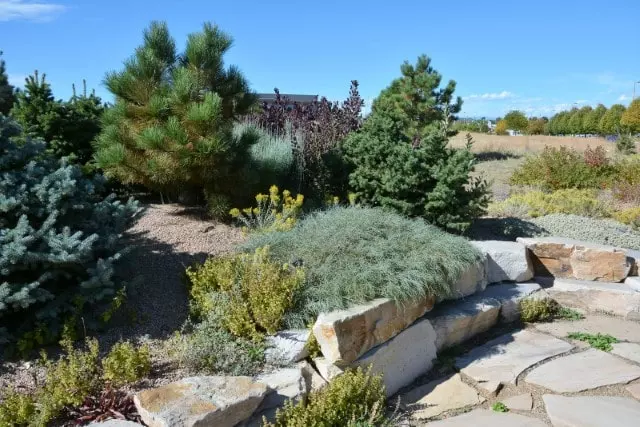The term xeriscaping comes from the Greek word Xeros, which means dry. The first to use it was the Americans, specifically in the 1970s, as a consequence of a period of severe droughts in the western United States. Its correct use of resources and its low water consumption allowed the creation of sustainable and aesthetic spaces. Nowadays, many opt for Xeriscaping to have their own environmentally friendly space.
We want to encourage you to continue learning how to take advantage of natural resources in a sustainable way. Would you like to know more about what Xeriscaping is and what plants it uses? Here we bring you all the basic concepts you need to know to start creating unique and ecological spaces.
Table of Contents
Xeriscaping Definition
Xeriscaping is the creation of gardens designed to reduce water consumption through the use of useful resources for the optimal growth of related ornamental species. It is important not to confuse efficient or reduced consumption with lack of irrigation. In the same way, the species used for them are not reduced to the exclusive use of succulents.
The objective of Xeriscaping is to achieve maximum sustainability, reduce water consumption, maintain its aesthetic function, and preserve the environment. It is a highly recommended option for urban gardens since, in addition to reducing water consumption, they incorporate other elements that increase their ecological value, such as low energy consumption, the use of natural fertilizers and insecticides, or the use of recycled elements.
How do we know if a garden meets the requirements to be considered a Xeriscaping garden? It is very simple. Xeriscaping consumes only a quarter of the water used by a conventional garden. In addition, they have a wealth of native flora and fauna capable of coexisting and growing with the same humidity and temperature requirements.
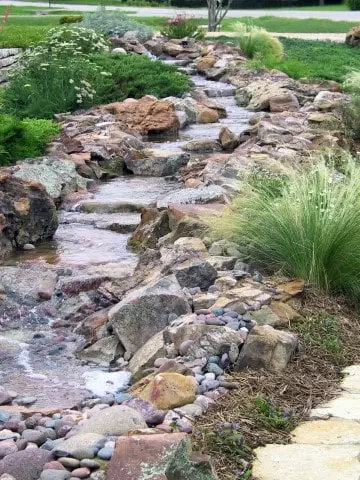
Xeriscaping Plants
When buying plants for Xeriscaping, it is possible to make the mistake of using only cacti, succulents, or succulents. Still, the world of Xeriscaping allows you a much more comprehensive range of possibilities.
Xeriscaping includes the use of trees, shrubs, ground cover, and climbers. The main idea is to create a rich ecosystem that allows the coexistence of showy and colorful species capable of growing under the specific conditions of xeriscaping.
Among the trees most commonly used in xeriscaping are:
- Acacia
- Brachichito
- Cercis
- Paper mulberry
- Callistemus
- Chorisia
- Carob
- Hackberry
- Casuarina
- Eucalyptus
- Olive tree
- Fig
- Ficus
- Grevillea
- Jacaranda
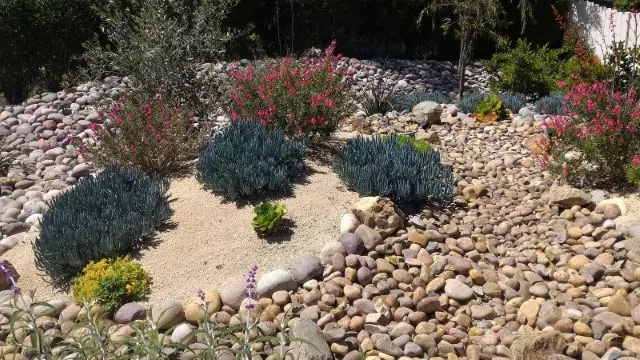
In xeriscaping, as we have already mentioned, shrubs and bushes are also used to create shelter for insects, birds, and small mammals. Among them, we highlight the following:
- Rockrose
- Coprosma
- Cotoneaster
- Hibiscus
- Hawthorn
- Lantana
- Myrtle
- Nandina
- Oleander
- Mastic
- Pittosporum
- Plumbago
- Broom
- Elder
Among the most commonly used ground cover plants in xeriscaping, we highlight the following:
- Caper
- Felicia
- Cat’s claw
- Maritime alder
- Periwinkle
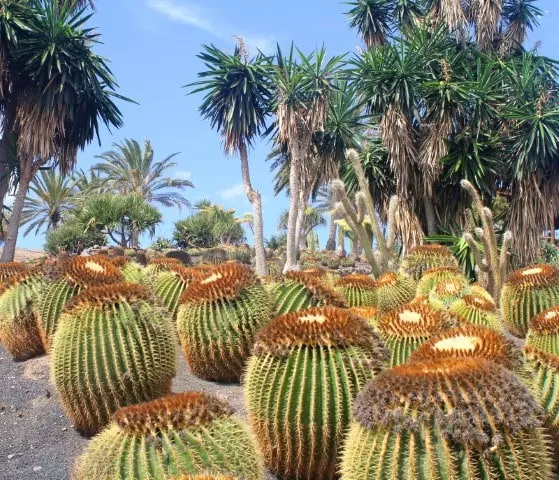
Climbing plants also have a place in the Xeriscaping, whether to cover a rockery or to add color to any trellis you use to beautify it:
- Bougainvillea
- Ivy
- Campsis
- Asparagus
In addition, here are some of the succulents or succulents for a Xeriscaping:
- Agave
- Aloe
- Cotyledon
- Jade tree
- Draco
- Euphorbia
- Kalanchoe
- Elephant foot or Ponytail Palm
- Opuntia
- Portulacaria
- Sansevieria
- Yucca
Finally, it is also common to use palms or conifers in Xeriscaping. The only thing that matters is that all of them coexist with each other. It is not necessary to limit yourself to only one type to make your Xeriscaping work. Dare to create a Xeriscaping with personality and different layers to fill your home with life.
We suggest you learn more ideas by reading these other articles about Mediterranean garden plants, which are accustomed to variable and even moderate or scarce amounts of water, and also about xerophytic plants: what they are, characteristics and examples, and desert plants.
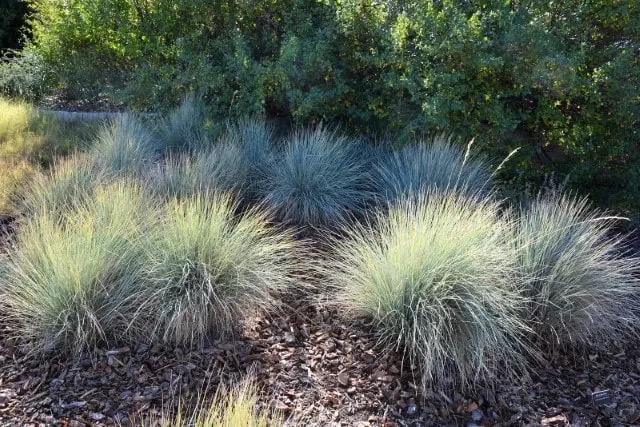
Tips For the Xeriscaping
Want to have Xeriscaping in your home but don’t know where to start? Don’t worry. Here are some basic tips to get you started in xeriscaping:
- Before you start, you need to make a previous design. You must know the characteristics and requirements of the land, as well as take into account the availability of water or the climate of the area.
- Once you know the type of soil you are going to work with, you will be able to select the most suitable species. If possible, opt for native plants that need little water.
- To achieve a greater effect, use different species for the different levels of your garden. Create a small organic ecosystem using different elements, such as trees, shrubs, ground cover, climbers, and your favorite succulents.
- For the irrigation of your Xeriscaping, we recommend that you use the drip or micro-sprinkler irrigation system. This way, you make sure you get the most out of the water you use. Here you can learn how to make a homemade drip irrigation system.
- Use mulch to protect your plants from humidity, and delimit the areas with pebbles. Another very good idea is to create rock gardens to shelter the small fauna in your garden.
- Look for ecological options for the maintenance of your garden by using organic fertilizers and insecticides.
- You should also use decorative gravel or bark to add a touch of color to the soil and enhance your plants.
We also recommend two excellent books on xeriscaping: “The Drought-Defying California Garden” and “The Dehydrated Gardener“. These resources offer invaluable insights and practical tips for creating thriving gardens in arid conditions.
- Rubin, Greg (Author)
- English (Publication Language)
- 208 Pages – 04/06/2016 (Publication Date) – Timber Press (Publisher)
- Tillman, Wes (Author)
- English (Publication Language)
- 250 Pages – 09/23/2022 (Publication Date) – Independently published (Publisher)
